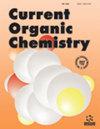A Review on the Development of Polymer Supported Heterogeneous Palladium Materials for Organic Synthesis and Electrochemical Applications
IF 2.1
3区 化学
Q3 CHEMISTRY, ORGANIC
引用次数: 0
Abstract
:: This comprehensive review explores the advancements in catalytic transformation, focusing on the use of heterogeneous catalytic systems with a particular emphasis on polymeric-supported palladium (Pd) complexes. This study explores the limitations associated with conventional homogeneous reagents, emphasizes the transition to eco-friendly catalytic systems, and emphasizes the importance of Pd nanoparticles. These nanoparticles are particularly noteworthy for their distinctive properties, including elevated catalytic activity, making them promising for various applications in organic synthesis. The review thoroughly examines the design and synthesis of heterogeneous catalysts, emphasizing the crucial selection of safe and recyclable supports to augment the longevity and reusability of metallic catalysts. Diverse polymer varieties, including polystyrene (PS), polyethylene (PE), polyacrylate derivatives, polyethylene glycol (PEG), and grafted polymers, are investigated as viable supports for Pd complexes. The authors intricately describe the synthesis techniques for these polymer-supported Pd catalysts and furnish illustrative examples showcasing their effectiveness in organic transformation. This comprehensive review additionally highlights the synthesis of polymer-supported palladium (Pd) materials and discusses their applications in electrochemistry. The focus extends to the electrocatalytic properties of Pdbased polymeric nanomaterials, showcasing their effectiveness in glucose sensing, hydrogen peroxide detection, and the sensing of other biological analytes. Furthermore, the catalytic capabilities of Pd nanoparticles in various electrochemical applications, including wastewater treatment and electrochemical capacitors, are explored. Integrating polymer-supported Pd materials into these electrochemical processes underscores their versatility and potential contributions to advancements in catalysis and electrochemical sensing. Catalytic applications featuring polymer-supported palladium complexes with polymeric ligands in organic synthesis processes use the Sonogashira reaction, Suzuki-Miyaura coupling, Heck reaction, Catalytic asymmetric transformations, etc. The subsequent section of the paper focuses on the creation of polymeric palladium complexes, achieved by the complexation of polymeric ligands with palladium precursors. It delves into noteworthy examples of catalytic processes employing polymer-supported palladium complexes featuring polymeric ligands, emphasizing distinct polymers, such as PS, PE, polyacrylate derivatives, PEG, and grafting polymers. The review concludes by exploring catalytic asymmetric transformations using chiral palladium complexes immobilized on polymer supports and discusses various chiral ligands and their immobilization on polymer supports, emphasizing their application in asymmetric allylic alkylation. The review furnishes a comprehensive summary of recent advancements, challenges, and prospective avenues in catalytic oxidation facilitated by polymer- supported palladium catalysts with electrochemical applications.聚合物支撑的异质钯材料在有机合成和电化学应用中的发展综述
::这篇综合综述探讨了催化转化方面的进展,重点是异质催化体系的使用,特别强调聚合物支撑的钯(Pd)络合物。本研究探讨了传统均相试剂的局限性,强调了向生态友好型催化体系的过渡,并强调了钯纳米颗粒的重要性。这些纳米颗粒因其独特的性质(包括较高的催化活性)而特别值得关注,使其在有机合成的各种应用中大有可为。该综述深入探讨了异相催化剂的设计与合成,强调了选择安全、可回收的载体以延长金属催化剂的寿命并提高其重复利用率的重要性。研究了各种聚合物,包括聚苯乙烯 (PS)、聚乙烯 (PE)、聚丙烯酸酯衍生物、聚乙二醇 (PEG) 和接枝聚合物,作为钯复合物的可行支撑物。作者详细描述了这些聚合物支撑钯催化剂的合成技术,并举例说明了它们在有机转化中的有效性。本综述还重点介绍了聚合物支撑的钯(Pd)材料的合成,并讨论了它们在电化学中的应用。重点延伸到钯基聚合物纳米材料的电催化特性,展示了它们在葡萄糖传感、过氧化氢检测和其他生物分析物传感中的有效性。此外,还探讨了钯纳米粒子在废水处理和电化学电容器等各种电化学应用中的催化能力。将聚合物支撑的钯材料整合到这些电化学过程中,凸显了它们的多功能性以及对催化和电化学传感领域进步的潜在贡献。在有机合成过程中,聚合物支持的钯配合物与聚合物配体的催化应用包括:Sonogashira 反应、Suzuki-Miyaura 偶联、Heck 反应、催化不对称转化等。论文接下来的部分重点介绍了通过聚合物配体与钯前体的络合反应生成聚合物钯络合物的过程。论文深入探讨了采用聚合物配体的聚合物支撑钯络合物的催化过程中值得注意的实例,重点介绍了不同的聚合物,如 PS、PE、聚丙烯酸酯衍生物、PEG 和接枝聚合物。综述最后探讨了固定在聚合物载体上的手性钯配合物的催化不对称转化,并讨论了各种手性配体及其在聚合物载体上的固定,强调了它们在不对称烯丙基烷基化中的应用。综述全面总结了聚合物载体钯催化剂在电化学应用催化氧化方面的最新进展、挑战和前景。
本文章由计算机程序翻译,如有差异,请以英文原文为准。
求助全文
约1分钟内获得全文
求助全文
来源期刊

Current Organic Chemistry
化学-有机化学
CiteScore
3.70
自引率
7.70%
发文量
76
审稿时长
1 months
期刊介绍:
Current Organic Chemistry aims to provide in-depth/mini reviews on the current progress in various fields related to organic chemistry including bioorganic chemistry, organo-metallic chemistry, asymmetric synthesis, heterocyclic chemistry, natural product chemistry, catalytic and green chemistry, suitable aspects of medicinal chemistry and polymer chemistry, as well as analytical methods in organic chemistry. The frontier reviews provide the current state of knowledge in these fields and are written by chosen experts who are internationally known for their eminent research contributions. The Journal also accepts high quality research papers focusing on hot topics, highlights and letters besides thematic issues in these fields. Current Organic Chemistry should prove to be of great interest to organic chemists in academia and industry, who wish to keep abreast with recent developments in key fields of organic chemistry.
 求助内容:
求助内容: 应助结果提醒方式:
应助结果提醒方式:


